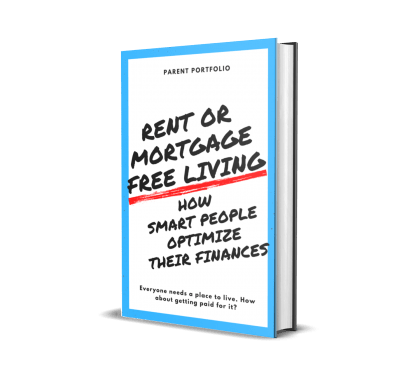Ready for Retirement? 6 Key Questions To Ask Yourself

A 401(k) can be a great way to save for retirement on a pre-tax basis, while enjoying the added benefit of an employer match. But it can be hard to know if you’re saving enough. You might be wondering, How much should I have in my 401(k) at 30? A common rule of thumb is to have at least one year’s salary saved in your 401(k) by the time you turn 30.
Your actual 401(k) balance, however, may be higher or lower depending on when you started saving, how much of your salary you defer into the plan, and the amount your employer matches. We’ll break down the average target balance for workers from age 25 to 65, and what to do if you’re not quite hitting that goal.
How Much You Ideally Have Saved for Retirement
It’s never too early to ask “am I on track for retirement?” The sooner you do, the more time you’ll have to catch up if you’re falling short. Just know that the answer can be a moving target, depending on a number of variables.
First of all, your retirement savings objective will depend largely on your retirement goals. Someone who wants to retire at 50 is going to need a much larger nest egg by age 30 than someone who plans to wait until age 70 to retire.
Many other factors also come into play. By way of example, let’s calculate the 401(k) savings for one 30-year-old professional woman. Retirement experts often recommend saving 10% to 15% of your income in a workplace retirement plan each year. Following that advice, our hypothetical saver:
- starts contributing to her plan at age 25.
- defers 10% of her $60,000 salary annually for five years.
- earns a 7% annual rate of return — a pretty average rate of return on 401(k) investments.
- benefits from an employer match of 50% of contributions, up to 6% of her salary.
By age 30, our professional would have $46,539 saved in her 401(k). This is a great start. However, you can see how her balance might be significantly higher or lower if we changed up one or more details. For instance, by contributing 15% of her pay instead, she’d have $64,439 on her Big 3-0. On the other hand, if she started saving later, earned a lower rate of return, or enjoyed a less generous employer match, her balance could be lower.
Bottom line? How much you should have saved in a 401(k) by age 30 (or any other age) is subjective. It varies based on where you’re starting from and how aggressively you’re saving each year.
How Much Do You Need to Retire: 6 Key Questions To Ask Yourself
While you might hear financial experts say that you need $1 million or even $2 million to enjoy a comfortable retirement, that’s a guideline rather than a set-in-stone number. The amount you’ll need to retire can depend on:
- How long you plan to continue working
- When you anticipate taking Social Security benefits
- Your desired lifestyle in retirement
- How much you expect to spend on basic living expenses in retirement
- Whether you have a spouse or partner
- Whether you anticipate needing long-term care at some point
Assessing your personal retirement goals can help you come up with a realistic number that you should be targeting. It’s also helpful to consider how things like changing health care needs, increases (or cuts) to Social Security and Medicare, and inflation may impact the dollar amount you need to save and invest to avoid falling short in retirement.
Average and Median 401(k) Balance by Age
Looking at the average savings by age can give you some idea of whether you’re on track. Just keep in mind that your progress and savings should match up with your specific goals.
| Age | Average Account Balance | Median Account Balance |
|---|---|---|
| Under age 25 | $6,264 | $1,786 |
| 25 to 34 | $37,211 | $14,068 |
| 35 to 44 | $97,020 | $36,117 |
| 45 to 54 | $179,200 | $61,530 |
| 55 to 64 | $256,244 | $89,716 |
| 65+ | $279,997 | $87,725 |
Using a chart like this can make it easier to see where you are on the savings spectrum. So if you’re wondering “how much should I have saved by 40?,” for example, you can see at a glance that the average 40-something has close to $100,000 in retirement savings.
Remember that average numbers reflect outlier highs and lows, while the median represents where people in the middle of the pack land. Between them, median can be a more accurate or reliable number to measure yourself against.
Tips to Save for Retirement
Enrolling in your 401(k) is one of the easiest ways to begin building retirement savings. Your employer may have enrolled you automatically when you were hired. If you’re not sure, contact your HR department. You can also check your default contribution rate to see how much you’re contributing to the plan.
It’s a good idea to contribute at least enough to get the full company match if one is offered. Otherwise, you’re leaving free money on the table.
If you’re worried you’re not saving enough, consider supplementing your 401(k) with an Individual Retirement Account (IRA).
An IRA is another tax-advantaged savings option. You can open a traditional IRA, which offers the benefit of tax-deductible contributions, or a Roth IRA. With a Roth IRA, you can’t deduct contributions, but qualified withdrawals are 100% tax-free.
Not sure how to start a retirement fund? It’s actually easy to do through an online brokerage. You can create an account, choose which type of IRA you want to open, and set up automatic contributions to start building wealth.
How Much Should You Contribute to Your 401(k) Per Year
The amount you should contribute to your 401(k) each year should reflect your retirement savings goal, how many years you have to save, and your expected annual rate of return.
When deciding how much to save, first consider your budget and how much of your income you can commit to your 401(k). Next, look at the amount you need to contribute to get the full company match. You can then plug those numbers, along with your salary, into a 401(k) calculator to get an idea of how likely you are to hit your retirement savings goal.
For instance, you might figure out that you need to save 15% of your pay each year. But if you’re not making a lot yet, you might only be able to afford saving 8% each year. So what do you do then? A simple solution is to increase your contribution amount each year and work your way up to the 15% threshold gradually.
Example of Impact of Compounding Interest on Retirement
Does it matter when you start saving for retirement? Yes, and in a big way, thanks to compounding interest. Compound interest is the interest you earn on your interest. The longer you have to save and invest, the better. In fact, the best way to build wealth in your 30s is simply to continue contributing what you can to your retirement savings, and then let it sit there for a few decades.
Going back to the 401(k) example mentioned at the beginning, someone who starts saving 10% of their pay at age 25 and earns a steady 7% rate of return would have just over $1.6 million saved for retirement by age 65. That assumes they earn the same $60,000 throughout their career. If they were to get a 2% annual raise, their 401(k) balance would be over $2 million by the time they retire.
Now, assume that same person waits until age 35 to start saving. Even with a 2% annual raise, they’d have just $938,897 saved by age 65. That’s still a decent chunk of money, but it’s far less than they would have had if they’d gotten an earlier start. This example illustrates how powerful compounding interest can be when determining how much you’ll end up with in retirement.
Don’t Panic If You’re Behind on Saving
Having a lot of money in your 401(k) by age 30 is great, but don’t feel bad if you’re not where you need to be. Instead of fretting over what you haven’t saved, focus on what you can do next to increase your savings efforts.
That can mean:
- Increasing your 401(k) contribution rate
- Opening an IRA to go along with your 401(k)
- Choosing low-cost investments to minimize fees
- Investing through a taxable brokerage account
What if you have no money to invest? In that case, you might need to go back to basics. Getting on a budget, for example, can help you rein in overspending and find the extra money that you need to save. A free budget app is a simple and effective way to keep tabs on spending and saving.
The Takeaway
How much you should have in your 401(k) at 30 isn’t a simple number that applies to everyone. Your savings goal depends on a number of factors, such as your anticipated retirement age, when you started saving, your rate of return, and so on.
Many retirement experts recommend saving 10% to 15% of your salary in a tax-advantaged retirement plan. From there, compounding interest over a long period of time will multiply your earnings. The bottom line is to save as much as you comfortably can.
Retirement planning starts with getting to know your spending habits and budget. If you’re not using a budget app yet, then a money tracker like SoFi Relay may be just what you need. Relay tracks all of your money in one place for free. You can track spending, get financial insights, and even monitor your credit right from your mobile device.
FAQ
What is the average 401(k) balance for a 35-year-old?
The average 401(k) balance for a 35-year-old is $97,020, according to Vanguard’s How America Saves report. Average 401(k) balances are typically higher than median 401(k) balances across all age groups, as they reflect higher and lower outliers.
How much will a 401(k) grow in 20 years on average?
The amount that a 401(k) will grow over a 20-year period can depend on how much someone contributes to the plan annually, how much of that contribution their employer matches, and their average rate of return.
Someone who saves consistently, increases their contribution rate annually, and chooses investments that perform well will likely see more growth than someone who saves only the bare minimum or hands back a chunk of their returns in 401(k) fees.
What is a good 401(k) balance at age 30?
A good 401(k) balance by age 30 is at least one year’s worth of salary. So if you make $75,000 a year you’d ideally want to have $75,000 in your retirement account. Whether that number is realistic for you can depend on how much you earn, when you started saving in your 401(k), and your rate of return.
Disclaimers:
SoFi’s Insights tool offers users the ability to connect both in-house accounts and external accounts using Plaid, Inc’s service. When you use the service to connect an account, you authorize SoFi to obtain account information from any external accounts as set forth in SoFi’s Terms of Use. SoFi assumes no responsibility for the timeliness, accuracy, deletion, non-delivery or failure to store any user data, loss of user data, communications, or personalization settings. You shall confirm the accuracy of Plaid data through sources independent of SoFi. The credit score provided to you is a Vantage Score® based on TransUnion™ (the “Processing Agent”) data.
*Terms and conditions apply. (Must click on the link to be eligible.) This offer is only available to new SoFi users without existing SoFi accounts. It is non-transferable. One offer per person. To receive the Rewards points offer, you must successfully complete setting up Credit Score Monitoring. Rewards points may only be redeemed into SoFi accounts such as cash in SoFi Checking and Savings or loan balances, Stock Bits, fractional shares and cryptocurrency subject to program terms that may be found here: SoFi Member Rewards Terms and Conditions. SoFi reserves the right to modify or discontinue this offer at any time without notice.
Financial Tips & Strategies: The tips provided on this website are of a general nature and do not take into account your specific objectives, financial situation, and needs. You should always consider their appropriateness given your own circumstances.
SORL0922004
This article is originally from SoFi.






